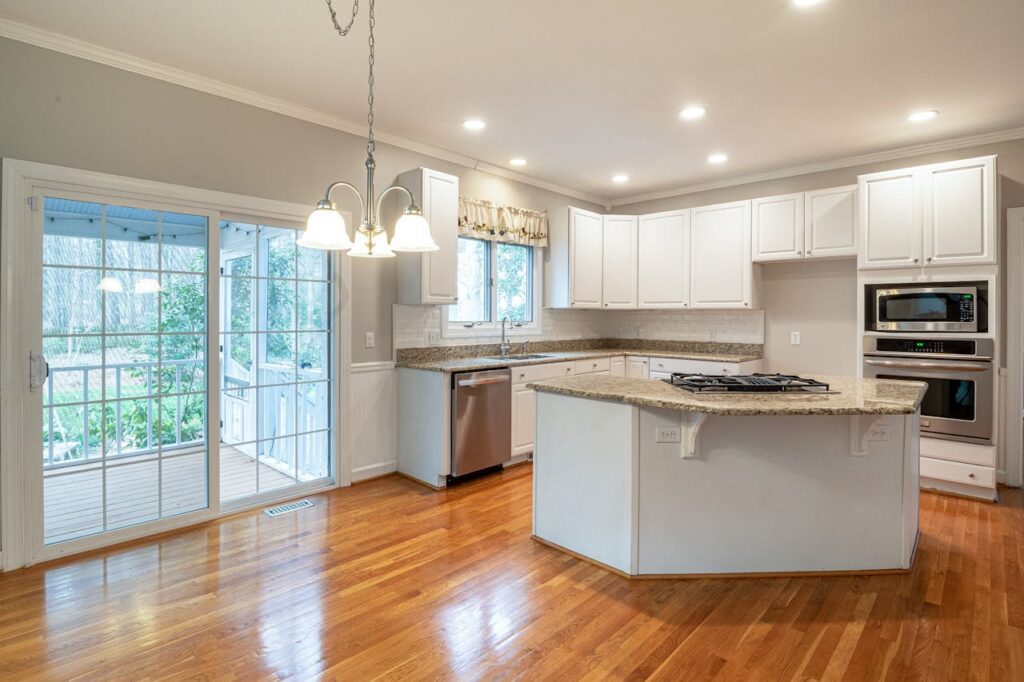Architectural plans and floor plans may seem similar, but they serve distinct purposes in the realm of design and construction. While both provide essential insights into a building’s layout, architectural plans delve deeper into the structural details, material specifications, and overall design concept. On the other hand, floor plans focus primarily on the spatial arrangement of rooms and areas within a structure, offering a bird’s eye view of the layout.
Understanding the disparities between architectural plans and floor plans is crucial for anyone involved in the construction or renovation process. By grasping these differences, you can effectively communicate your vision to architects, builders, and designers, ensuring that your project aligns with your expectations and requirements.
Understanding architectural plans
Purpose
Architectural plans serve as detailed blueprints for construction projects, guiding builders on how to bring a structure to life. They provide a comprehensive overview of the building’s design and layout.
Components
Structural building plans encompass various elements such as floor plans, elevations, sections, and details. These drawings outline the foundation, walls, roof, doors, windows, and other structural features.
Importance
Architectural plans are crucial in conveying the architect’s vision and design intent to contractors and builders. They ensure that everyone involved in the project is on the same page regarding the layout, dimensions, materials, and finishes.
Exploring floor plans
Room Layouts
Floor plans provide detailed representations of interior spaces within a building. They outline the arrangement of rooms, walls, and other features within each floor.
Floor plans showcase the spatial relationships between different areas, offering a clear visualization of how rooms are connected and their overall layout. By examining a floor plan, individuals can easily understand the flow and organization of a space.
Importance in Visualization
Floor plans play a crucial role in helping individuals visualize the distribution of rooms and furniture within a building. They provide an overhead view that simplifies understanding the spatial configuration.
Individuals can use floor plans to plan interior design arrangements, ensuring that furniture fits well within each room. This visualization aids in making informed decisions about room layouts and optimizing available space efficiently.
Comparison with Architectural Drawings
While architectural plans encompass various aspects of building design, including elevation drawings, site plans, and zoning details, floor plans specifically focus on interior spaces and room layouts.
Unlike elevation drawings that emphasize the vertical dimensions of a structure or site plans that illustrate the building’s placement on its surroundings, floor plans concentrate on showcasing how rooms are interconnected and their dimensions within each level of the building.
Key differences between architectural and floor plans
Architectural Plans
Architectural plans are comprehensive blueprints that provide a detailed overview of a building’s design. They include information on the building’s structure, materials, and systems. Architects create these plans to guide the construction process accurately.
Architectural plans contain specific details such as electrical layouts, plumbing systems, and structural elements. These plans are crucial for ensuring that the building complies with safety regulations and meets the client’s requirements. Architects focus on designing functional and aesthetically pleasing spaces in architectural plans.
Floor Plans
Floor plans are simplified diagrams that showcase the layout of a building’s interior spaces. They primarily focus on illustrating the spatial relationships between rooms, doors, windows, and other features. Designers typically create floor plans to visualize how individuals will move through a space.
Floor plans provide an easy-to-understand representation of a building’s layout without delving into intricate technical details. They offer a bird’s-eye view of the property, helping clients and builders understand the flow and functionality of each room. Designers prioritize creating practical and visually appealing arrangements in floor plans.
Architectural Plans vs. Floor Plans
- Architectural plans encompass all aspects of a building’s design, including structural components and systems.
- Floor plans, on the other hand, focus solely on room layouts and spatial organization within a structure.
Roles of Architects and Designers
- Architects are responsible for creating architectural plans that serve as the blueprint for constructing buildings.
- Designers, on the other hand, specialize in developing floor plans that emphasize efficient space utilization and aesthetics.
Unique Information Provided
- Architectural plans offer detailed insights into a building’s construction requirements, ensuring compliance with safety standards.
- Floor plans, meanwhile, highlight room configurations and flow patterns to optimize functionality and visual appeal.
The role of architects in creating plans
Architectural Responsibilities
Architects play a crucial role in developing architectural plans by translating a client’s vision into tangible designs. They consider structural elements, aesthetics, and functionality to create comprehensive plans.
Collaborating with urban planners and designers, architects ensure that the proposed structures align with urban planning regulations and requirements. By integrating various aspects such as visualization and technical details, they produce detailed architectural plans.
Collaboration with Professionals
Architects work closely with project stakeholders, including engineers and contractors, to finalize plans. This collaboration ensures that the architectural design is feasible within the construction process.
Through effective communication and coordination, architects incorporate feedback from different professionals to refine the plans. This collaborative effort results in well-rounded architectural plans that meet the needs of all stakeholders involved.
Expertise for Detailed Plans
To create accurate and detailed architectural plans, architects must possess expertise in various areas. They need a deep understanding of structural elements to ensure the stability and integrity of the proposed structures.
Architects also require proficiency in utilizing advanced software tools for drafting and modeling. This expertise enables them to present intricate details and specifications in their architectural plans accurately.
Importance of detail in architectural plans
Critical Details
Architectural plans are essential blueprints that outline the design and structure of a building. Including precise details in these plans is crucial for ensuring the successful execution of construction projects.
Design Specifications
Detailed architectural plans encompass various aspects such as room dimensions, wall thickness, window placements, and door sizes. These specifics provide clarity to contractors and builders during the construction process.
Structural Elements
Key components like foundation details, structural supports, plumbing layouts, and electrical plans are meticulously documented in architectural drawings. These elements form the foundation for a sturdy and functional building.
Material Selection
Architectural plans also specify materials to be used for construction, including finishes, fixtures, and fittings. This information helps maintain consistency in quality throughout the project.
Spatial Arrangement
Precise spatial arrangements, such as furniture layouts, circulation paths, and accessibility features, are vital aspects covered in architectural plans. These details ensure optimal functionality and usability of the space.
Environmental Considerations
Incorporating sustainable design features like energy-efficient systems and natural lighting strategies into architectural plans is becoming increasingly important. These considerations contribute to eco-friendly buildings with reduced environmental impact.
How to find the right architect
Researching Architects
When finding the right architect, start by researching online for local architects in your area. Look at their websites and review their portfolios to assess their style and expertise. Consider reading reviews from previous clients to gauge their reputation.
Selecting a Qualified Architect
To ensure you choose a qualified architect, verify their credentials and certifications. Check if they are registered with the relevant architectural board or association in your region. This step is crucial in guaranteeing that your architect meets industry standards.
Reviewing Portfolio and Experience
When selecting an architect, carefully examine their portfolio to see if their design aesthetic aligns with your vision. Assess the variety of projects they have worked on to determine their experience level. A diverse portfolio showcases adaptability and creativity.
Asking Relevant Questions
During the selection process, prepare a list of questions to ask potential architects. Inquire about their past projects, timelines, and budget management skills. Ask how they handle project challenges and communicate with clients throughout the process.
Importance of Communication
Effective communication is key when working with an architect. Ensure that you can easily convey your ideas and expectations to them. A good architect will listen attentively to your needs and provide valuable input to enhance your project.
Building Trust
Establishing trust with your chosen architect is essential for a successful collaboration. Transparency, honesty, and open communication are vital components of a trusting relationship. Choose an architect who values your input and respects your decisions.
Why an architect’s experience matters
Quality Influence
An architect’s experience significantly impacts the quality of architectural plans. With years of practice, architects develop a keen eye for detail and a deep understanding of structural integrity.
Experienced architects can seamlessly translate a client’s vision into precise architectural plans, ensuring every aspect is meticulously considered and accurately represented.
Benefits of Experience
Working with experienced architects in plan development offers numerous benefits. Their experience allows them to foresee potential challenges, resulting in more efficient planning processes.
Moreover, seasoned architects possess a wealth of knowledge about local building codes and regulations, ensuring that the architectural plans comply with all necessary requirements.
Handling Challenges
Experienced architects excel at handling challenges that may arise during the plan creation process. Their experience equips them with problem-solving skills to navigate complexities and find innovative solutions.
When faced with design constraints or budget limitations, experienced architects can adapt quickly without compromising the overall integrity of the architectural plans.
Building a strong reputation in architecture
Client Feedback
Client feedback plays a crucial role in an architect’s journey to establish a reputable standing in the industry. By listening attentively to clients’ needs and preferences, architects can tailor their designs to exceed expectations. This personalized approach not only enhances client satisfaction but also showcases the architect’s ability to deliver exceptional results.
Project Success
The success of projects is a key determinant of an architect’s credibility and reputation. Completing projects within budget, meeting deadlines, and ensuring high-quality construction are vital aspects that contribute to a positive reputation. Consistently achieving project goals demonstrates professionalism and expertise, further solidifying the architect’s position as a trusted professional in the field.
Long-term Benefits
Establishing a strong reputation as an architect yields numerous long-term benefits. A reputable architect attracts more clients through word-of-mouth referrals and positive reviews, leading to a steady influx of projects. A renowned architect can command higher fees for their services due to their proven track record of delivering successful outcomes. Building a strong reputation also fosters trust and confidence among clients, encouraging repeat business and long-lasting professional relationships.
Conclusion
Now that you understand the key disparities between architectural and floor plans, you can appreciate the pivotal role architects play in shaping your dream space. Detail is paramount in architectural plans, and selecting the right architect with ample experience can make all the difference in creating a solid foundation for your project. By prioritizing reputation and expertise, you ensure that your vision is brought to life with precision and finesse.
In your quest for the perfect architectural plan, remember that finding an architect who aligns with your vision is crucial. Take the time to research and choose wisely, as this decision will significantly impact the outcome of your project. Trust in the process, lean on the expertise of seasoned professionals, and watch as your architectural dreams become a stunning reality.

Transform Your Home with Architectural Plans by Red White & Blue Construction!
Are you planning to enhance your home’s layout in Lafayette, CA? Look no further than Red White & Blue Construction for top-tier architectural plans! Specializing in detailed planning and execution, we customize our strategies to fit your unique needs and vision. Renowned for our expertise in architectural design, we are dedicated to transforming your space into a more stylish, functional, and modern environment. Every project we undertake is meticulously planned and executed to surpass your expectations. Our distinguished reputation throughout the Bay Area highlights our commitment to precision, quality, and the highest standards in every project phase.
At Red White & Blue Construction, we strive to do more than just update your home’s layout; we aim to elevate your entire renovation experience. With our comprehensive planning, transparent pricing, and unmatched customer service, choosing us for your architectural design needs ensures a smooth, efficient renovation journey. Choose Red White & Blue Construction and take the first step towards a more stylish and functional home. Contact us today to get started!
Disclaimer
The materials available on this website are for informational and entertainment purposes only and not to provide advice. You should obtain advice concerning any particular issue or problem from a professional. You should not act or refrain from acting based on any content included in this site without seeking legal or other professional advice. The information presented on this website may reflect only some of the current building developments. No action should be taken in reliance on the information on this website. We disclaim all liability concerning actions taken or not taken based on any or all of the contents of this site to the fullest extent permitted by law.





